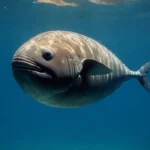Discovering the Fascinating World of the Pied Flycatcher (Ficedula hypoleuca)

In the heart of European forests, a small bird with distinctive black and white plumage catches the eye and captivates anyone daring to stop and observe. It’s the Pied Flycatcher (Ficedula hypoleuca), a mysterious and charming creature that finds its home among the dense foliage and tangled branches of deciduous forests. In this article, we will delve deeper into the life and remarkable characteristics of this bird, unveiling its secrets and role in the ecosystem.
Habitat and Distribution:
The Pied Flycatcher is a common inhabitant of deciduous forests in Europe and Asia. With a special preference for mature and vegetation-rich forests, this migratory bird is often found in the temperate regions of the European continent. It nests in tree holes or special nesting boxes, preferring environments with an abundant supply of insects, its main food source.
Morphological Characteristics:
A distinctive feature of the Pied Flycatcher is its black and white plumage. Males stand out with a black cap on their heads and a white throat, while females have a grayer and paler plumage. With a length of approximately 13 cm, these birds are masters of agile flight and are often seen hunting for insects at the tips of branches.
Behavior and Feeding Habits:
The Pied Flycatcher is known for its ability to catch insects in flight. Perching steadily on a branch or fence, it carefully observes its prey, and when it detects an insect flying by, it swiftly launches its attack, capturing it with precise wing movements. These birds feed on a variety of insects, including flies, moths, and ants, thus contributing to insect population control in their ecosystem.
Ecological Importance:
Although seemingly modest creatures, Pied Flycatchers play a crucial role in the ecosystem. By controlling insect populations, they help maintain ecological balance in the dense forests where they live. Additionally, like other bird species, Pied Flycatchers also serve as indicators of ecosystem health, reflecting changes in the surrounding environment through their behavior and breeding success.
Conclusion:
The Pied Flycatcher is a fascinating and essential creature for the health of European forest ecosystems. With its distinctive plumage and agile behavior, this bird finds its place in the hearts of nature enthusiasts and represents a remarkable example of biodiversity and adaptation in the natural world. By understanding and protecting its habitat, we can contribute to the conservation of this wonderful species for future generations.

















One thought on “Discovering the Fascinating World of the Pied Flycatcher (Ficedula hypoleuca)”